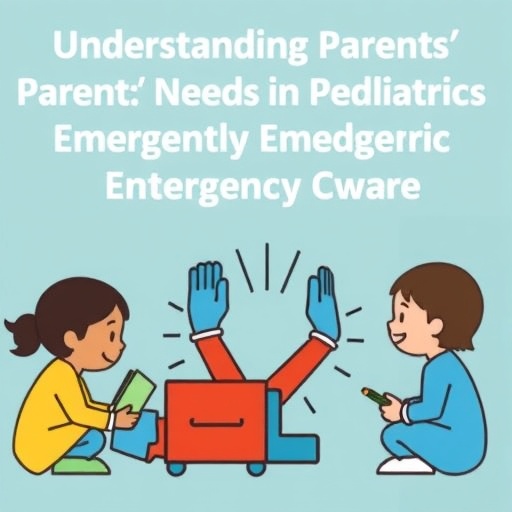In a pioneering study that sheds new light on neonatal care, researchers have delved into the intricate relationship between blood cultures and infection predictability in extremely preterm infants. Upon admission to a level IV Neonatal Intensive Care Unit (NICU), these vulnerable patients are known to be at an increased risk for infections, which can lead to dire complications or even mortality. The research led by Sharadgah, Fathi, and El-Ferzli examines the imperative need for effective diagnostic strategies in identifying bacterial infections early in this fragile population.
The study presents a robust analysis focused on how blood cultures, a standard diagnostic tool in infectious diseases, can be optimized specifically for extremely preterm infants. Given that these patients often present with non-specific symptoms, the ability to predict the likelihood of a positive blood culture becomes crucial. The research not only aims to refine existing protocols but also aspires to establish a more predictive framework that can aid clinical decision-making processes in busy NICUs.
At the heart of this investigation is the recognition that blood stream infections significantly contribute to morbidity and mortality rates in extremely preterm infants. The authors meticulously outline the pathophysiological factors that predispose these infants to infections, including underdeveloped immune systems and prolonged hospital stays, which create an environment for pathogens to thrive. This foundational understanding sets the stage for why improving blood culture positivity predictions can have a monumental impact on patient outcomes.
The methodology employed by the research team is noteworthy. It involves a comprehensive retrospective analysis of admitted patients within a specific timeframe, thus allowing for a significant sample size that enhances the statistical validity of their findings. The researchers meticulously sift through clinical data, lab results, and infection markers to draw correlations that could yield predictive insights about blood culture results. With this approach, they aim to establish parameters that could indicate higher chances of infection even before cultures return positive results.
A striking aspect of the findings is the identification of specific clinical indicators that correspond with increased likelihoods of blood culture positivity. These indicators can range from clinical symptoms such as temperature dysregulation to laboratory anomalies like leukopenia. By highlighting these predictors, the study offers a practical guide that could help clinicians prioritize which infants require immediate intervention versus those who might be monitored under lower risk parameters.
Furthermore, the study addresses the critical need for timely intervention. In a NICU setting, time can be of the essence when it comes to treating infections in vulnerable infants. By leveraging the predictive indicators identified in the research, healthcare professionals can initiate empirical antibiotic therapy sooner. This proactive approach aims to mitigate the risk of complications stemming from untreated infections, potentially saving lives and improving overall health outcomes in this delicate population.
The significance of this study rests not only in its academic contributions but also in its immediate clinical implications. The results have the potential to change the standard practices within NICUs, moving toward a model that incorporates predictive analytics in infection management. This could pave the way for a shift towards a more personalized approach to neonatal care, where each infant’s unique clinical picture guides their treatment plan.
In light of emerging infectious diseases and antibiotic resistance, the need to improve diagnostic accuracy is more pressing than ever. As such, this study serves as a crucial reminder of the ongoing challenges faced by neonatologists in combating infections in their most vulnerable patients. The research underscores the importance of continuously refining diagnostic practices, adapting to the specific needs of this patient demographic, and ultimately to uphold the highest standards of neonatal care.
While the implications of this study are profound, it also calls for further research to validate the proposed predictive indicators. The authors acknowledge that prospective studies are necessary to test the practical application of their findings in real-world settings. This step is essential in translating their research into routine clinical practice effectively, ultimately ensuring that more infants receive the right care at the right time.
As the field of neonatology continues to evolve with advancements in technology and medical knowledge, studies like this one exemplify the critical intersection of research and clinical practice. They provide invaluable insights that equip neonatal care teams with the knowledge needed to navigate the complexities of managing infections in preterm populations. This ongoing dialogue between research and practice is what ultimately leads to improved outcomes for infants admitted to NICUs worldwide.
In summary, the exploration of blood cultures and the prediction of their positivity in extremely preterm infants represents a significant breakthrough in neonatal medicine. With its rigorous methodology and clinical relevance, this study by Sharadgah, Fathi, and El-Ferzli delivers essential insights that promise to enhance the management of infections, thereby benefiting some of the most vulnerable patients in the healthcare system.
This research heralds a new era of evidence-based practices in the NICU, guiding healthcare professionals toward a future where timely and accurate infection management becomes the norm rather than the exception. The study emphasizes that through thoughtful analysis, predictive modeling, and a commitment to continuous improvement, the field of neonatology can strive toward the ultimate goal of excellent care and better outcomes for preterm infants.
Subject of Research: Blood cultures and their predictive value in extremely preterm infants.
Article Title: Blood cultures and predicting positivity in extremely preterm infants admitted to an outborn level IV NICU.
Article References:
Sharadgah, A., Fathi, O., El-Ferzli, G. et al. Blood cultures and predicting positivity in extremely preterm infants admitted to an outborn level IV NICU.
BMC Pediatr 25, 854 (2025). https://doi.org/10.1186/s12887-025-06164-9
Image Credits: AI Generated
DOI: 10.1186/s12887-025-06164-9
Keywords: Neonatology, blood cultures, preterm infants, infection prediction, NICU.
Tags: bacterial infections in neonatesblood culture diagnostic strategiesclinical decision-making in NICUsearly infection detection in infantsextremely preterm infant infectionsimmune system development in preterm babiesinfections in NICUmorbidity and mortality in preterm infantsneonatal care for preterm infantsoptimizing blood culture protocolspathophysiology of infectionspredicting blood culture positivity





